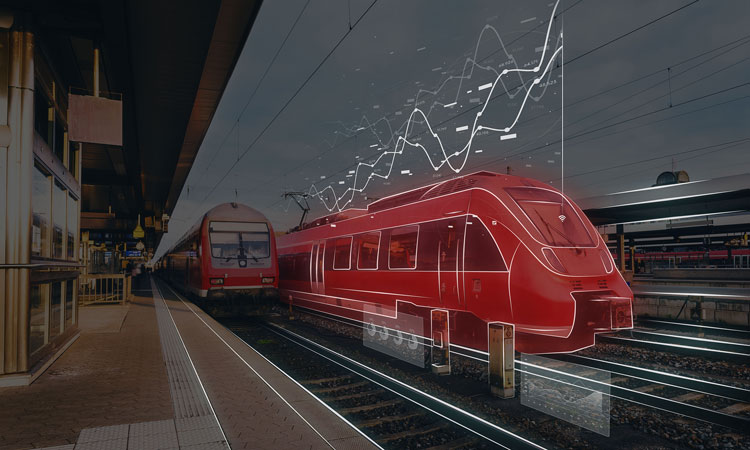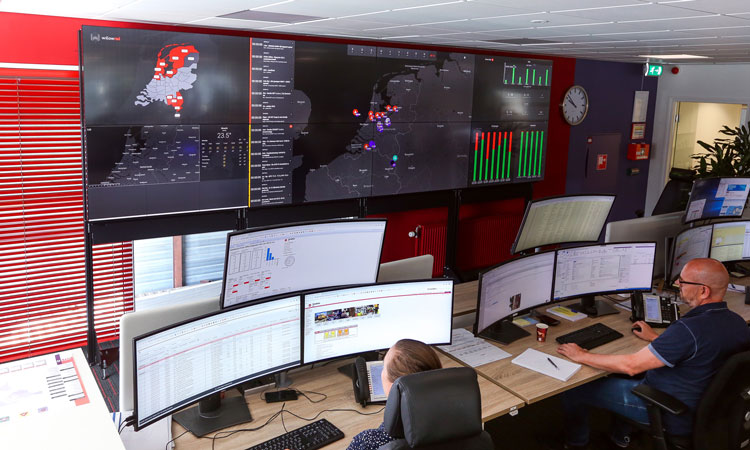Empowering the rail industry to leverage digital solutions to improve performance
Posted: 4 March 2020 | Gerard Francis | No comments yet
Gerard Francis, CEO of WillowRail, discusses the driving forces behind the digital enablement of rail and how the company strives to empower rail operators, managers, engineers and maintenance staff to make accurate, timely, and contextual decisions to improve the performance and reliability of their rail networks.


Digital twins are transforming the rail industry
What challenges have WillowRail identified in the rail sector that need addressing?
Population growth and urbanisation is driving a capacity crunch in rail. With more than two-thirds of the world’s population expected to live in urban areas by 2050, there is mounting pressure to enable our existing rail networks to achieve more, through increased levels of availability and driving the highest levels of productivity possible.
Within this context, the big challenges that we identified were:
- The need to connect multiple siloed solutions
- Fixing the problem of reactive maintenance.
Today, rail networks are managed by an abundance of disparate tools and measuring devices. The average rail network may use in excess of 20 different software packages, each with their own interface, data set and process. Owners and operators are faced with a sea of unintegrated data, often left to join the dots on their own and to make critical decisions based on incomplete information. This presents a huge challenge for owners and operators. They lack a single, consolidated view of their network along with the real-time data required to make accurate decisions. Additionally, most railways operate in an incredibly reactive manner, and the technicians in the field often don’t have the right information at their fingertips to resolve the problems.
With WillowRail, we saw an immediate opportunity to make improvements to the maintenance and management of rail networks and, ultimately, keep trains running with minimal downtime. WillowRail is an integrated rail asset management solution that brings disparate rail systems into one data-driven solution. It’s a consolidated view of all the critical aspects of network health to drive real-time decision making; and, in the future, more preventative and data-driven decisions to optimise network performance.
The digital enablement of rolling stock, controls, signalling and the importance of leveraging big data present both opportunities and challenges in equal measure
We see this as the first step in the rail sector moving toward a digital future. The digital enablement of rolling stock, controls, signalling and the importance of leveraging big data present both opportunities and challenges in equal measure. WillowRail is seeking to provide a solution that can enable owners and operators in the rail industry to leverage these amazing new innovations, in a way that is integrated, secure and scalable.
How and why did your joint venture with Strukton Rail come about?
We founded the joint venture arrangement with Strukton Rail in 2018. The connection was formed through my previous relationships at John Holland Group, through which I made connections with the Perth arm of Strukton Rail. This joint venture was compelling because it combined unique traits of both parties to bring something new to the market. WillowRail’s innovative approach and technological expertise pairs with Strukton Rail’s deep industry experience to form a successful partnership.
Together, Strukton Rail and WillowRail can offer an integrated solution to the rail market that combines asset management and maintenance, change management and a technology platform. This then leads to the substantial and effective transformation of rail organisations. As a renowned technology company, WillowRail creates easy-to-use systems that optimise performance, enhance user experience and open new streams of revenue through data management expertise – turning data into real value.


The command centre at Strukton Rail Headquarters
What are the core benefits of a digital twin?
The digital twin solution that is provided by WillowRail, version one, is focussed on track asset management. WillowRail’s ‘digital twin’ combines operational data and asset management information into a simple and intuitive software platform. We overlay static asset information, maintenance information and track health information onto an intuitive GIS interface.
There are three core benefits to our approach today:
Firstly, WillowRail drives improved network performance. The platform provides a holistic view of asset performance with embedded algorithms, which supports condition-based monitoring and predictive maintenance. The combination of these elements enables us to improve availability by up to 99.9+ per cent, reduce track geometry defects up to 50 per cent and reduce maintenance costs up to 20 per cent.
Secondly, WillowRail drives improved decision making by providing the right data at the right time. WillowRail provides a single view of network data for all stakeholders – for both the client/operator and its contracted parties. By giving decision makers complete real-time transparency into asset performance, they can now accurately track Network Performance KPIs. This is unique in the market, as the client owns data and they have the ability to accurately measure and rank their operators/maintaining parties.
Finally, WillowRail is also enabling a more connected workforce. As part of the platform, we developed a mobile application for the Maintenance Groups which provides navigation to faults, safety information, the seamless transfer of communication back to the headquarters and real-time location tracking, asset repair status and database updates.
What impact has WillowRail already had on rail infrastructure in the Netherlands, and can the same be applied to other countries?
Over the past 12 months, we’ve been rolling out the WillowRail platform across the Strukton Rail network.
In the first months of operation, there was an immediate reduction in the number of communications from the moment a fault was reported to it being fixed. Previously, it could take an extended period, up to seven touchpoints and various methods of communication. These touchpoints included the initial call logging the fault, to emails and/or messages being relayed regarding the fault and previous service history, all the way through to an engineer being deployed and the fault being successfully restored.
Over the past 12 months, we’ve been rolling out the WillowRail platform across the Strukton Rail network.
Since WillowRail has been deployed, the average touchpoints have been reduced to just three: Fault logged, engineer identified and deployed, fault report logged. The method of communication has also reduced to either one email or phone call, and all other communication through the WillowRail workforce interface. Faults are being identified and managed quicker and more efficiently than was ever conceivable prior to the deployment of WillowRail.
Through WillowRail, we are also now collecting structured information on the cause of faults and repair outcomes, which is informing smarter maintenance outcomes and helping towards predictive maintenance.
These are just high-level examples. However, what is clear is that having access to the data WillowRail is able to provide has the power to drive change throughout an organisation. Information is aggregated for organisational collaboration across all user levels, from executive through to maintenance staff, enabling total transparency and accountability.
How much further can the technology behind WillowRail be pushed?
The long-term vision of this platform is that WillowRail will enable a rail network to progress beyond track asset management, to a platform which combines all aspects of a rail network in a digital environment, from performance management to passenger experience.
The long-term vision of this platform is that WillowRail will enable a rail network to progress beyond track asset management
Beyond this, the vision for WillowRail’s technology is to use the digital twin as an integration layer to enable a fast and secure connection with third-party software providers. Exciting areas that we are looking into include: blockchain contract management, predictive maintenance and improved safety protocols.
What’s really pushing this wave, however, are huge investments and thinking about what companies, such as Microsoft, are doing in the space of intelligent cloud and intelligent edge. We’re a close partner of Microsoft’s, and we believe that the work that they are doing at the edge and in the cloud will be a driving force behind the digital enablement of rail.
What challenges do you think still exist within the rail sector as it continues on its digital journey?
The use of digital twins for rail is still very much in development. Whilst we have been making some compelling and exciting use-cases for this technology, we understand the on-going risks and challenges that are ahead for the industry. Our job is to help rail customers stay at the forefront and be leaders in their regions and countries.
Our job is to help rail customers stay at the forefront and be leaders in their regions and countries.
The biggest challenges we see in the immediate future are: Connecting to, and modernising, legacy systems; cyber-security and end-point risk in an integrated environment; and the change management challenge for stakeholders who may feel threatened or misunderstand what we are trying to achieve.
Despite these challenges, I choose to be optimistic. By working closely with expert partners in our field, such as Strukton Rail, combined with our dedication to push the envelope with new technology, we can truly change this critical industry. In the process, I hope we can improve the lives of millions of people.
Related topics
Big Data, Blockchain, Cyber-Security, Digital Twins, Digitalisation, Internet of Things (IoT), Technology & Software








